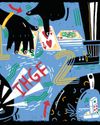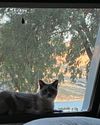
The high desert of northwest New Mexico is a windswept and endless landscape of rolling red hills and dramatic rock formations. These are ancient lands, home to some of the oldest civilizations in North America. For millennia, the Puebloan people thrived in this desert environment. They constructed massive settlements, built from mud and stone and supported by wood gathered from the surrounding mountain forests.
In Chaco Canyon stands the ruins of one of these settlements. Pueblo Bonito was a sprawling building that stood five stories tall and contained more than 600 rooms. At its peak around 1080 CE, Pueblo Bonito may have housed up to 1,000 people in a kind of ancient apartment complex.
For hundreds of years, Pueblo Bonito marked the cultural epicenter of the Desert Southwest. Then, the Puebloans disappeared. By the 14th century, Pueblo Bonito was abandoned. To this day, nobody knows why.
But the Puebloans left clues behind. They are in the wooden beams of Pueblo Bonito. They're locked away in wooden ladders and old fire wood. The answers to why Puebloans left are hidden in tree rings.
The Art of Tree Rings
Cut a cross section of a tree and you'll see lines and lines circling each other. These patterns capture the history of the tree. Tree rings tell stories of life and death. They tell stories of wet years when there was plenty of food to eat. They tell stories of dry years when water was scarce. Tree rings tell the stories of when civilizations flourished and when they collapsed.
Dendrochronology is the science of dating things-events, climate, artifacts-by examining the annual growth patterns found in tree rings. Dendrochronologists study the tree rings of certain species of trees to piece together the history of the environment.
Esta historia es de la edición April 2023 de Muse Science Magazine for Kids.
Comience su prueba gratuita de Magzter GOLD de 7 días para acceder a miles de historias premium seleccionadas y a más de 9,000 revistas y periódicos.
Ya eres suscriptor ? Conectar
Esta historia es de la edición April 2023 de Muse Science Magazine for Kids.
Comience su prueba gratuita de Magzter GOLD de 7 días para acceder a miles de historias premium seleccionadas y a más de 9,000 revistas y periódicos.
Ya eres suscriptor? Conectar

HOUSE OF CARDS
TRY THE PERFECT EXPERIMENT—AND THEN REFLECT ON HOW IT WENT.

ACCIDENTALLY Delicious
Have you ever been really hungry, but there wasn't much to eat in your kitchen? Did you throw together a bunch of stuff you had on hand and were pleasantly surprised when it tasted good?

IS YOUR SOCIAL MEDIA FEED TOO PERFECT?
EVERYONE'S LIFE CAN APPEAR PERFECT ON SOCIAL MEDIA. On YouTube, Instagram, Snapchat, and similar apps, people tend to share their happiest, most picturesque moments. They carefully compose any text to get the message just right. They use filters and enhancements to glam up images and videos. The app sorts the posts with the most likes and comments to the top. The end result? All you see of others' lives is the best of the best.

Art ALERT!
THE CASE OF THE MASTERPIECE THAT WASN'T

MARYAM ZARINGHALAM
SCIENCE POLICY FELLOW AND WRITER

Lost Cat Treks More Than 800 Miles to Get Home
Rayne Beau (pronounced RANE-BO, as in \"rainbow\") is a two-year-old Siamese cat.

EASY AS ABC
But in number theory, well, it's complicated.

That Wanaka Tree Gets a Companion
\"THAT WANAKA TREE,\" AS IT'S CALLED, IS A FAMOUS WILLOW TREE THAT GROWS OUT OF LAKE WANAKA ON THE SOUTH ISLAND OF NEW ZEALAND.

Two College Students Devise Smart Glasses That Can ID People
YOU'RE WAITING FOR THE SUBWAY WITH A COUPLE OF YOUR FRIENDS.

Two Comb Jellies Can Fuse Their Bodies Together to Become One
COMB JELLIES ARE GELATIN-LIKE AND MOSTLY SEETHROUGH INVERTEBRATES, OR ANIMALS WITHOUT A BACKBONE, THAT FLOAT IN THE OCEAN NEAR SHORE.